7 eCommerce Business Models: Choosing the Right Strategy for You

With the rise of digital platforms, understanding the diverse eCommerce business models becomes pivotal in crafting a winning strategy. This comprehensive exploration delves into seven distinct eCommerce models, unraveling their definitions, highlighting prominent examples, and analyzing their advantages and disadvantages. By navigating through these models, entrepreneurs and businesses can gain valuable insights, empowering them to make informed decisions when choosing the ideal strategy tailored to their unique goals and offerings in the digital marketplace.
Overview of 7 eCommerce Business Models
1. Business-to-Consumer (B2C)
Definition
Business-to-Consumer (B2C) refers to a commerce model in which businesses sell products, services, or goods directly to individual consumers or end-users. In this model, companies produce or procure items with the primary intent of meeting the demands and preferences of individual customers rather than selling to other businesses or intermediaries.
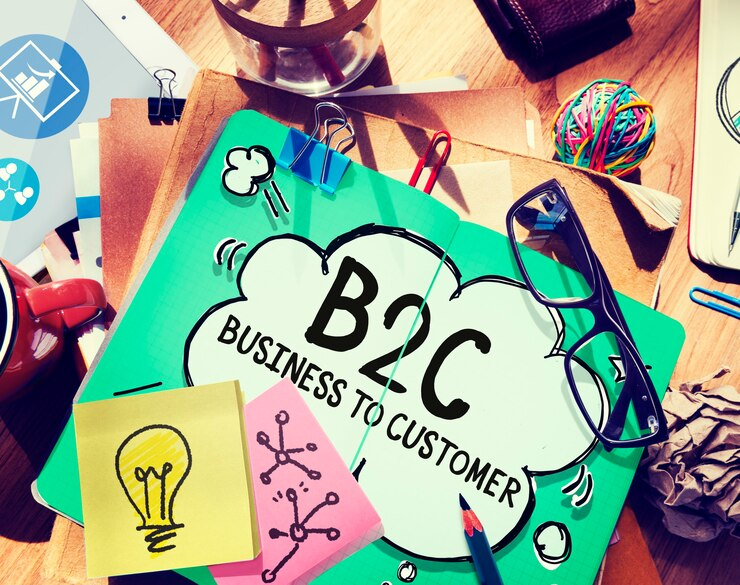
Examples of B2C companies
-
Amazon: An online retail giant offering a wide range of products to individual consumers.
-
Apple: Sells electronics, software, and services directly to individual customers.
-
Nike: Offers athletic footwear, apparel, and accessories directly to consumers through retail stores and online platforms.
Advantages of B2C
-
Larger customer base: B2C businesses can target a vast audience of individual consumers.
-
Direct feedback: Direct interaction with consumers allows for immediate feedback, facilitating better understanding of customer needs and preferences.
-
Easier marketing: Marketing strategies can be designed to reach a broad audience through various channels such as social media, advertising, and content marketing.
Disadvantages of B2C
-
High competition: The B2C market is often highly competitive, making it challenging to stand out.
-
Lower profit margins: Due to the focus on individual consumers, price sensitivity can lead to lower profit margins.
-
Customer acquisition costs: Acquiring individual customers can be costly, especially in competitive markets, impacting the overall cost of sales and marketing efforts.
2. Business-to-Business (B2B)
Definition
Business-to-Business (B2B) refers to a commercial transaction model where businesses sell products, services, or solutions to other businesses rather than individual consumers. In this model, the primary focus is on transactions and relationships between two businesses as opposed to a business and an end-user.
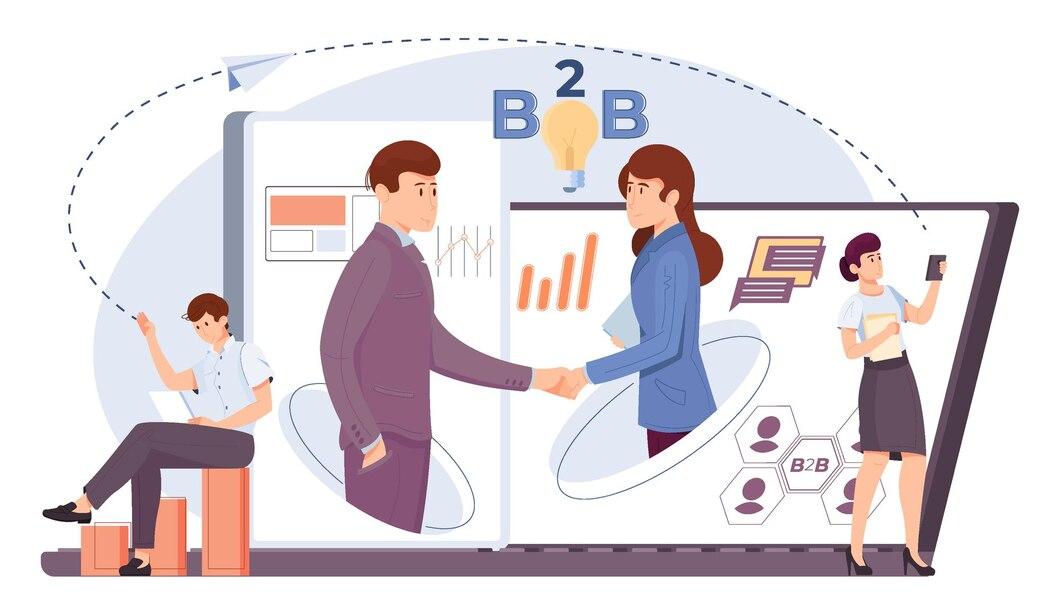
Examples of B2B companies
-
Alibaba: An online platform connecting businesses for wholesale trade.
-
Salesforce: Provides business software solutions for customer relationship management ( CRM) to other businesses.
-
Cisco: Offers networking and communication technology solutions to other businesses.
Advantages of B2B
-
More emerging technologies: Emerging technologies are empowering B2B businesses to enhance their service offerings. For example, utilizing automated solutions like a cartridge filling machine can significantly streamline the manufacturing processes for companies producing cartridge-based oils or extracts. These machines can handle precise filling operations efficiently, boosting productivity and maintaining high-quality standards.
-
Larger transaction sizes: B2B transactions often involve larger volumes and higher value, leading to potentially higher revenue per sale.
-
Longer-term relationships: B2B relationships tend to be more enduring, leading to potential for recurring business and partnerships.
-
Potentially higher-profit margins: With larger transactions and specialized products/services, B2B businesses may enjoy higher profit margins.
Disadvantages of B2B
-
Longer sales cycles: B2B sales often involve complex decision-making processes, leading to longer sales cycles.
-
Complex decision-making: Decision-making in B2B transactions involves multiple stakeholders and can be more challenging compared to individual consumers.
-
Fewer but larger clients: B2B businesses might rely on a smaller number of larger clients, making them vulnerable to losing a significant portion of revenue if they lose a key client.
Read more: What is B2B and B2C? Differences between B2B and B2C
3. Consumer-to-Consumer (C2C)
Definition
Consumer-to-Consumer (C2C) is a business model where individuals or consumers engage in direct transactions, selling goods, services, or products to other individuals without the involvement of a business entity. In this model, individuals act as both sellers and buyers, participating in exchanges through various platforms or marketplaces specifically designed to facilitate such transactions.
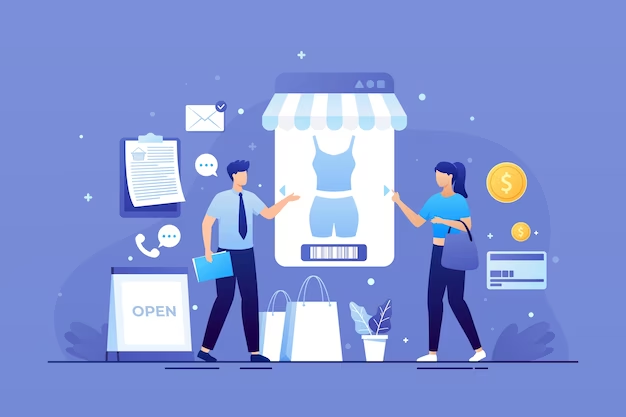
Examples of C2C companies
-
eBay: An online auction platform where individuals can buy and sell a wide variety of products to other consumers.
-
Etsy: A platform where individuals can sell handmade or vintage items directly to other consumers.
-
Airbnb: Enables individuals to rent out their properties or spare rooms to other individuals looking for accommodation.
Advantages of C2C
-
Flexibility for individuals: Allows individuals to sell items or services directly, providing flexibility in pricing and offerings.
-
Wide variety of products: Offers a diverse range of products and services since individuals can sell unique or niche items.
-
Lower overhead costs: Individuals operating in C2C models often have lower overhead expenses compared to businesses, enabling competitive pricing.
Disadvantages of C2C
-
Trust issues: There might be trust concerns between buyers and sellers since transactions involve individuals rather than established businesses.
-
Potential for fraudulent activities: C2C platforms might face challenges related to scams or fraudulent activities by either buyers or sellers.
-
Dependence on user-generated content: Success in C2C models heavily relies on user-generated content and interactions, which can be unpredictable or unreliable at times.
4. Consumer-to-Business (C2B)
Definition
Consumer-to-Business (C2B) is a business model in which individual consumers or individuals offer products, services, or solutions to businesses. In this model, consumers act as the suppliers or service providers, and businesses are the buyers or clients.
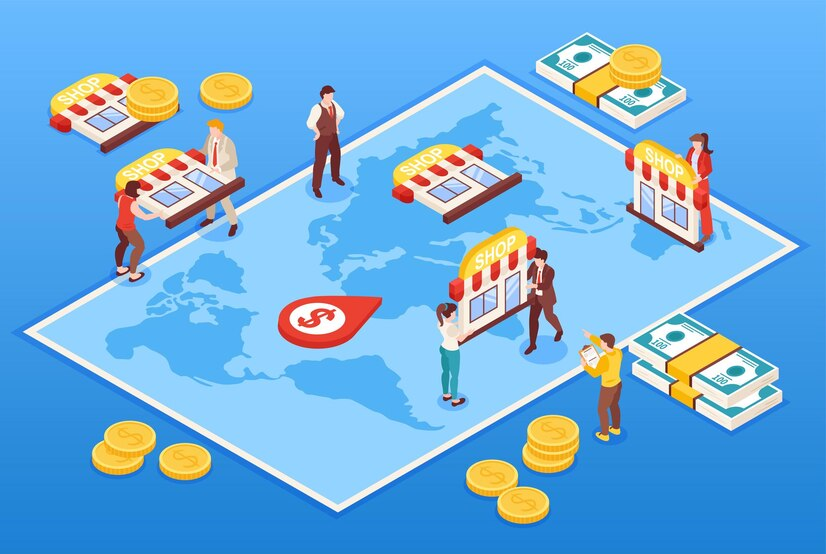
Examples of C2B companies
-
Freelancing platforms (e.g., Upwork, Fiverr): Individuals offer their services, such as writing, graphic design, or programming, to businesses seeking freelancers.
-
Influencer marketing: Individuals with social media influence collaborate with businesses to promote products or services to their audience in exchange for compensation.
Advantages of C2B
-
Flexibility for individuals: Individuals can set their prices and offerings, providing flexibility in working with different businesses.
-
Potential for higher profits: Skilled individuals or influencers with a strong following can demand higher compensation for their services.
-
Diverse talent pool: Businesses can access a diverse talent pool outside their organization for various services or promotions.
Disadvantages of C2B
-
Difficulty in finding suitable businesses: It can be challenging for individuals to find businesses willing to engage in C2B transactions or to find businesses that match their skill sets or offerings.
-
Market acceptance challenges: Convincing businesses to adopt C2B services or influencer collaborations might be difficult, especially for newer or unconventional services.
-
Dependency on individual performance: Success in C2B relies heavily on the individual’s performance, reputation, or influence, which can be unpredictable or subject to fluctuations.
5. Business-to-Business-to-Consumer (B2B2C)
Definition
Business to Business to Consumer (B2B2C) is an eCommerce business model in which one business sells its products or services to another business, which, in turn, sells these products or services to end consumers. Essentially, it involves a company providing goods or services to another business, acting as an intermediary or reseller, which then delivers these offerings to the final consumers.

Examples of B2B2C companies
-
Software companies partnering with retailers: A software company may sell its product to a retailer, which then sells the software to individual consumers.
-
Manufacturers supplying goods to distributors: Manufacturers producing goods that are sold by distributors or retailers directly to end consumers.
Advantages of B2B2C
-
Extended reach: Allows businesses to reach a broader customer base through partnerships with other businesses that have established consumer connections.
-
Leveraging partner expertise: Partnerships enable businesses to leverage the expertise of other entities, such as retailers or distributors, in reaching and serving consumers.
-
Potential for shared marketing efforts: Collaborative marketing initiatives between businesses can reduce individual marketing costs and expand brand visibility.
Disadvantages of B2B2C
-
Coordination challenges: Managing relationships and coordinating activities between multiple entities (business partners) can be complex and require effective communication and collaboration.
-
Profit sharing: Sharing profits or margins between multiple entities can lead to disagreements or conflicts if not outlined clearly in the partnership agreement.
-
Complex partnerships: The success of B2B2C models heavily relies on the effectiveness of partnerships, and if these partnerships fail or aren’t well-managed, it can impact the entire chain from business to consumer.
6. Direct-to-consumer (D2C)
Definition
Direct-to-Consumer (D2C) refers to a business model where products are sold directly to consumers, bypassing traditional intermediary channels such as wholesalers, retailers, or third-party marketplaces. In this model, companies manufacture, market, and distribute their products directly to customers through their own online platforms, physical stores, or both, allowing for closer relationships with consumers and greater control over the customer experience.

Examples of D2C companies
-
Warby Parker: Sells eyewear directly to consumers through its online platform and retail stores, bypassing traditional eyewear retailers.
-
Casper: Offers mattresses and sleep-related products directly to consumers online, eliminating the need for physical stores and third-party retailers.
-
Dollar Shave Club: Provides razors and grooming products directly to consumers through a subscription-based model, circumventing traditional retail channels.
Advantages of D2C
-
Control over branding and customer experience: Allows brands to maintain control over the entire customer journey, from product design to customer service, ensuring consistent brand experience.
-
Direct customer relationships: Enables direct interaction with customers, fostering stronger connections and facilitating quicker feedback loops for product improvements.
-
Data ownership: Direct sales mean brands have access to valuable consumer data, allowing for better insights into consumer behavior and preferences.
Disadvantages of D2C
-
Need for strong marketing and distribution channels: Brands must invest heavily in marketing and distribution infrastructure to reach and attract consumers without the support of established retail networks.
-
Higher initial investment: Establishing a direct sales channel often requires significant upfront investment in technology, logistics, and marketing.
-
Challenges in reaching a wider audience: Building brand recognition and expanding reach can be more challenging without the visibility provided by traditional retail partnerships.
7. Business-to-Government (B2G)
Definition
Business-to-government (B2G) refers to an eCommerce business model where companies or businesses sell products, services, or solutions directly to government entities or agencies. In this model, the primary focus is on transactions between businesses and various levels of government—national, state, or local—rather than selling to individual consumers or other businesses.
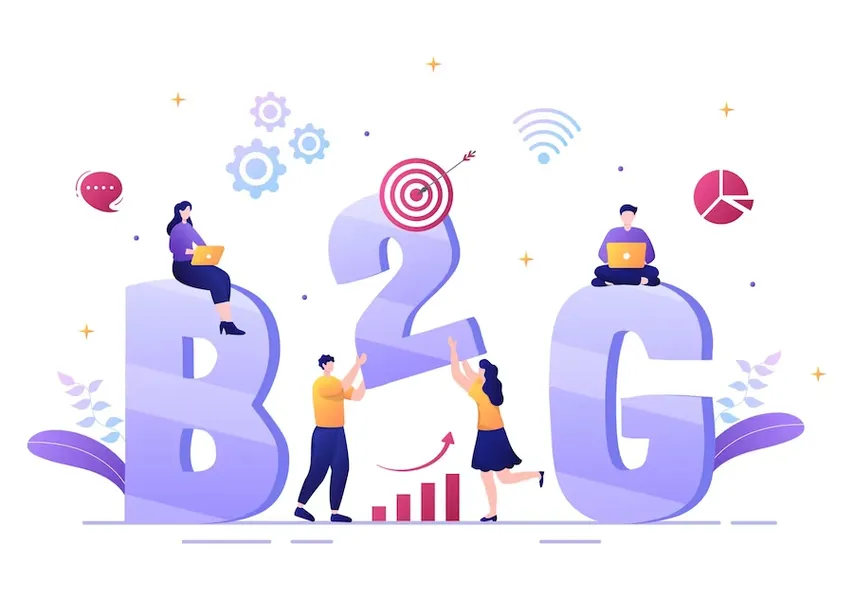
Examples of B2G companies
-
Boeing: Sells aircraft and aerospace technology to government agencies like the Department of Defense.
-
IBM: Provides IT solutions and services to various government departments and agencies.
-
General Electric: Supplies various products and services, such as healthcare equipment or energy solutions, to government entities.
Advantages of B2G
-
Large contracts: Government contracts can be substantial and lucrative, providing significant revenue opportunities for businesses.
-
Stable demand: Governments often have consistent and stable demand for various goods and services, providing a more reliable revenue stream.
- Potential for long-term relationships: Successful dealings with government entities can lead to long-term contracts and ongoing partnerships.
Disadvantages of B2G
-
Lengthy procurement processes: Government procurement processes are often lengthy and involve compliance with strict regulations, leading to longer sales cycles.
-
Strict regulations: Dealing with government contracts requires adherence to complex and stringent regulations, adding administrative burdens and potential compliance challenges.
- High competition: Competition for government contracts can be intense, requiring significant effort and resources to secure deals.
| Business Model | Examples | Advantages | Disadvantages |
|---|---|---|---|
| B2C | Amazon, Apple, Nike | - Larger customer base - Direct feedback - Easier marketing |
- High competition - Lower profit margins - Customer acquisition costs |
| B2B | Alibaba, Salesforce, Cisco | - Larger transaction sizes - Longer-term relationships - Higher-profit margins |
- Longer sales cycles - Complex decision-making - Fewer but larger clients |
| C2C | eBay, Etsy, Airbnb | - Flexibility for individuals - Wide variety of products - Lower overhead costs |
- Trust issues - Potential for fraudulent activities - Dependence on user-generated content |
| C2B | Upwork, Influencer marketing | - Flexibility for individuals - Potential for higher profits - Diverse talent pool |
- Difficulty finding suitable businesses - Market acceptance challenges - Dependency on individual performance |
| B2B2C | Software companies partnering with retailers | - Extended reach - Leveraging partner expertise - Potential for shared marketing efforts |
- Coordination challenges - Profit sharing - Complex partnerships |
| D2C | Warby Parker, Casper, Glossier | - Control over branding/customer experience - Direct customer relationships - Data ownership |
- Need for strong marketing/distribution - Higher initial investment - Challenges in reaching wider audience |
| B2G | Boeing, IBM, General Electric | - Large contracts - Stable demand - Potential for long-term relationships |
- Lengthy procurement processes - Strict regulations - High competition |
Factors to Consider When Selecting a Business Model
Choosing the right business model is critical for the success of any venture. Several factors should be considered when selecting a business model. Here are key factors to ponder:
Nature of Products/Services
-
Complexity: Consider whether your offerings are simple or complex. Certain models might be more suitable for intricate or customizable products/services.
-
Value Proposition: Evaluate the unique value your product/service offers and which model aligns best with delivering and showcasing that value.
Target Customer Base
-
Understanding Customers: Identify your target audience—consumers, businesses, government entities—and their preferences, behaviors, and purchasing habits.
-
Customer Relationship: Determine how directly you want to engage with your customers and the level of control you desire over the customer relationship.
Capabilities and Resources
-
Financial Resources: Assess your financial capacity to establish and sustain the chosen business model. Some models might require higher initial investments.
-
Operational Capabilities: Consider your team’s skills, technology, logistics, and infrastructure required to support the chosen model effectively.
Market Dynamics
-
Competitive Landscape: Analyze the competitive environment in your industry and how different models can give you a competitive edge.
-
Market Trends: Understand market trends, consumer behavior shifts, and technological advancements influencing the market and how your chosen model fits within these trends.
Scalability and Growth Potential
-
Scalability: Evaluate the potential for growth and expansion with your chosen model. Some models might offer more scalability than others.
-
Adaptability: Consider how adaptable the model is to changes in market conditions or shifts in consumer preferences.

Legal and Regulatory Considerations
-
Comply with Laws and Regulations: Understand the legal and regulatory requirements associated with different business models, especially if selling across borders or dealing with specific industries. Staying informed about changes in laws, seeking legal counsel when necessary, and fostering a culture of compliance within an organization are crucial steps in navigating the complex landscape of legal and regulatory considerations.
-
Comply with GDPR: The GDPR is vital global data privacy legislation for online businesses. Non-compliance can lead to hefty fines for store owners. However, using third-party GDPR extensions offers a simple solution. This can include permanent deletion of customer accounts, complete removal of default addresses, management of billing information, GDPR cookie restrictions, downloadable personal data, and automated customer account deletion.
Risk Assessment
- Risk Tolerance: Assess the risks associated with each model, including market risk, financial risk, regulatory risk, etc., and your tolerance for these risks.
Alignment with Goals and Vision
- Long-term Vision: Ensure the chosen model aligns with your long-term goals, vision, and values as a business.
Experimentation and Adaptability
-
Testing: Consider experimenting with different models or hybrid approaches to find the best fit.
-
Flexibility: Be open to adapting or evolving your business model based on feedback, market changes, or emerging trends.
By carefully analyzing these factors and understanding how each aligns with your business goals, market conditions, and resources, you can make a more informed decision in selecting the most suitable business model for your venture.
Conclusion
In the realm of eCommerce, diversity reigns supreme. Each of the seven distinct business models explored in this guide-Business-to-Consumer (B2C), Business-to-Business (B2B), Consumer-to-Consumer (C2C), Consumer-to-Business (C2B), Business to Business to Consumer (B2B2C), Direct-to-Consumer (D2C), and Business to Government (B2G)-brings its own set of advantages and challenges to the table. Identifying the perfect fit among these models hinges on a comprehensive understanding of product types, target demographics, operational capabilities, and market dynamics.
By critically assessing these factors and aligning them with individual business objectives, enterprises can carve a path towards sustainable growth and success in the ever-evolving landscape of eCommerce.



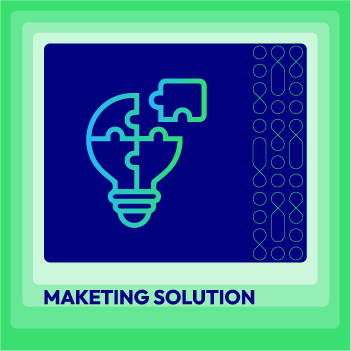



![Top 20+ Must-have Shopify Apps for 2025 [Free & Paid] - Mageplaza](https://cdn2.mageplaza.com/media/blog/must-have-shopify-apps/top-must-have-shopify-apps.png)
![[2025 Updates] Top 10+ Upsell Apps for Shopify - Mageplaza](https://cdn2.mageplaza.com/media/blog/best-upsell-shopify-app/cover.png)